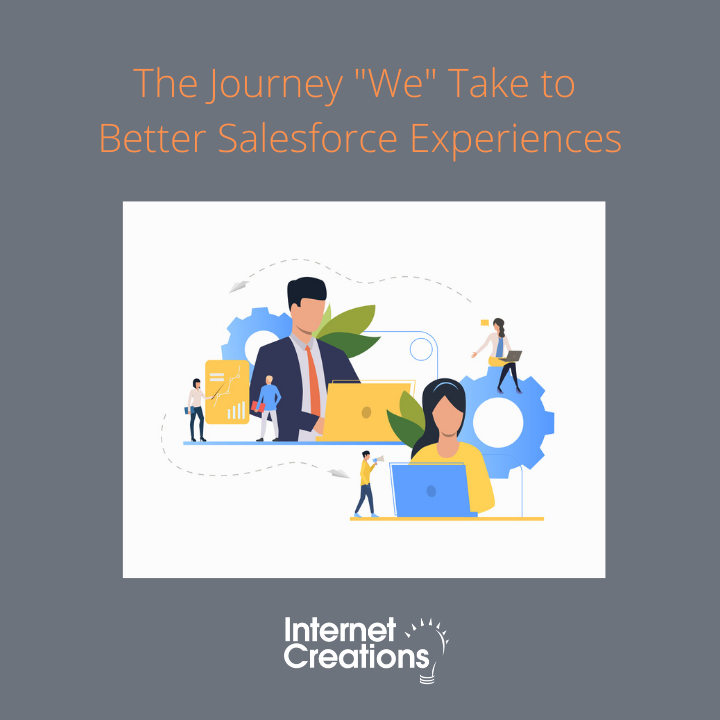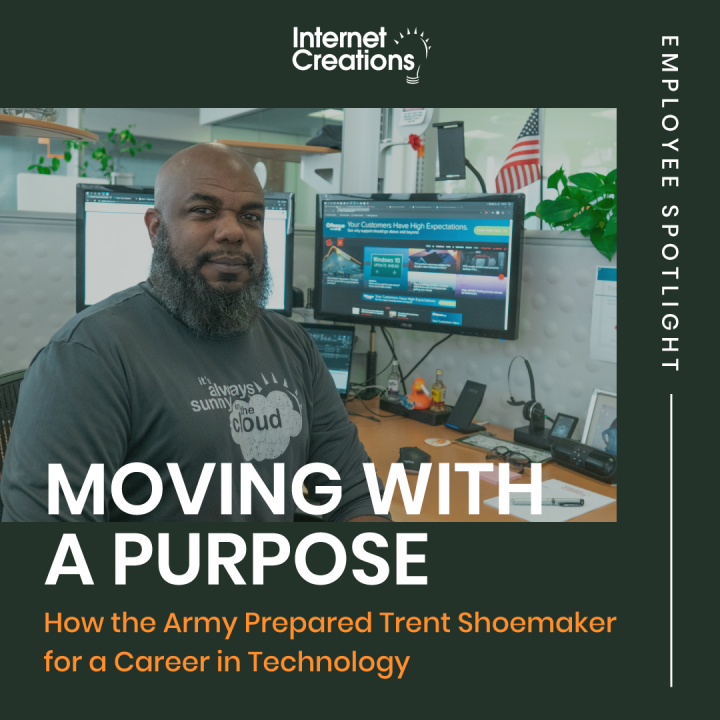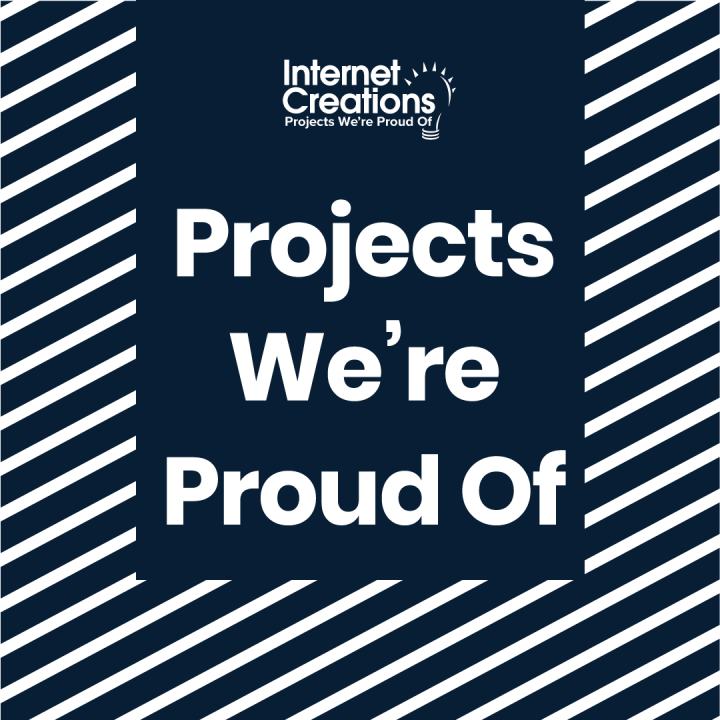My IC Way: Improv Tactics for Salesforce Solution Success
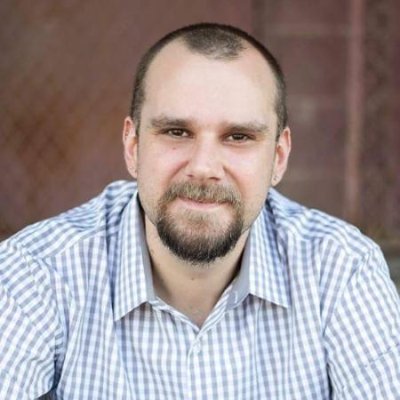
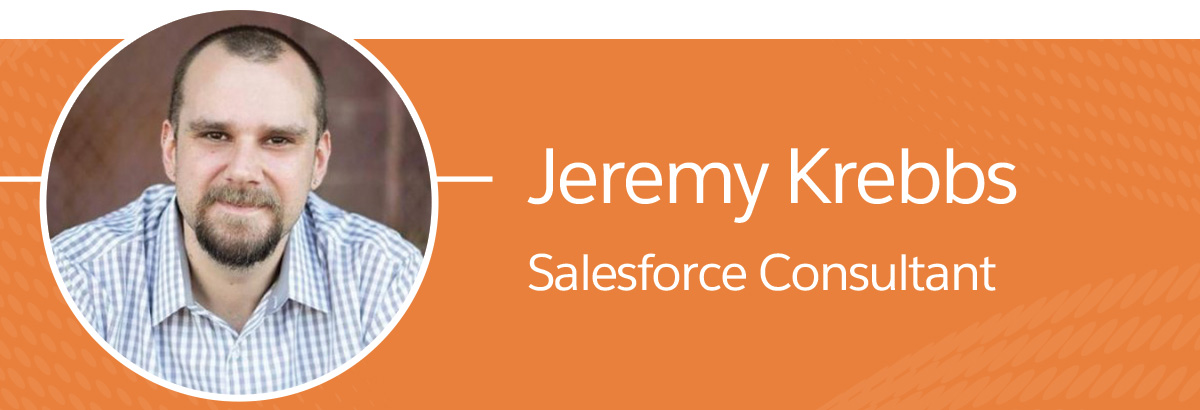
Once upon a time, I got my start working for a software company, doing customer support over the phone – helping people with the software they were using, or the products they bought.
Until one day my boss said, “You know, there’s an opening for a Salesforce administrator. I think you’d be a good fit.”
Once I figured out what Salesforce was, I thought “I’ll give it a shot. It seems fun.” I may be the only person to have ever spoken those words.
The truth is that when I was a kid, I always wanted to be an architect. But I can’t draw at all. Even my stick figures look bad. But working with Salesforce has given me the opportunity to be almost like an architect—building solutions, solving problems—without having to be able to draw pretty pictures.
People bring me their challenges, and then I get to brainstorm all the possible ways that Internet Creations can use Salesforce to help. Basically, I come up with a bunch of possibilities and then think “Where can I take those?” And then I just plan out that path.
Now there’s always a time where you need to zoom back in and make sure that you take care of the main problem because it’s easy to get carried away with other enhancements and ideas. But this approach can lead to surprising results.
Here’s a good example: one of my clients was in desperate need of an overhaul in the process they used for tracking training they conduct across the United States and the cost of those pieces of training. There was a process to document the training in Salesforce but other related information was spread across many different excel spreadsheets and there was no ownership which led to the data being incorrect or not tracked at all. They were also struggling with user adoption because Salesforce was not set up intuitively.
They came to us saying, “We need help rebuilding this part of Salesforce, and while we’re doing that we want to track cost. How do we do that?”
Well, in the process of finding the answers to those questions I discovered that we could eliminate a good deal of extra work they were doing.
They were sending out certifications when their clients completed training. They were also keeping track of trainings that people went to, but those things were managed by two separate people—each of whom didn’t know what the other was doing. We realized if we were already keeping track of trainings and certifications, we could easily automate the process. So, the people who attended the classes were added to a process that demonstrated they could be certified, and then sent the certification when they completed a survey of the course.
The original goal was to make things easier for the users. But just by asking a few questions, we helped free up hours of staff time a day and made the entire thing run more efficiently.
It’s funny because that kind of “yes, and” approach—where we say “yes, we could do that, and we could also do this”—didn’t always come naturally to me.
But I’ve been involved in improvisational comedy for three years now, and “yes, and” is pretty much the bedrock of all improv.
When we’re on stage and someone throws out an idea, it’s my job to say yes to it—no matter what it is—and then add to it. “No, that doesn’t make sense,” or “That’s the wrong idea” simply doesn’t work on an improv stage.
So if you apply that principle to this job, when a customer comes up with a problem, I’m going to say, “Yes, I hear that you have that problem, and I’m also going to suggest this and that. We can fix the thing you’re struggling with, and we can also make it better this way.”
That’s not to say that I’m just always in there giving them my ideas because sometimes I don’t have anything to add—and that happens in improv all the time. It’s important to know when not to add to a scene.
Improv is excellent for supporting the idea that you should take chances. I can come out and offer up ideas, and I know my team is going to grab one of those ideas and run with it—and they’re going to make it great!
And it’s like that at Internet Creations. While I try to get everything right the first time, I feel empowered to take chances and explore what’s possible.
What I mean is this… Everyone—from customers to colleagues to the CEO—supports an experimental approach. Just like my improv team, they’re very much “Yes, and.”
Which is perfect… Because it’s when you say “yes” instead of “no” or “but…”
That’s when the great work can happen.
“IC is growing! To view our current openings in NJ and Texas, please visit ic.force.com/jobs
- My IC Way: Improv Tactics for Salesforce Solution Success - November 17, 2017
